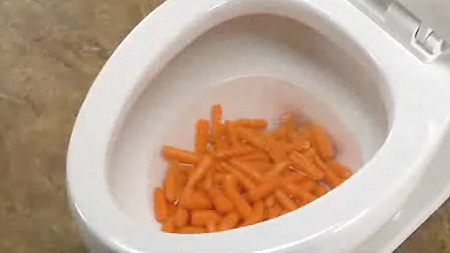Is it Possible to Dispose of Food in the Toilet?
Is it Possible to Dispose of Food in the Toilet?
Blog Article
What're your thoughts regarding Flushing Food Down the Toilet??

Intro
Many individuals are frequently confronted with the problem of what to do with food waste, especially when it comes to leftovers or scraps. One common concern that develops is whether it's all right to purge food down the toilet. In this post, we'll explore the reasons why individuals might consider purging food, the effects of doing so, and alternate techniques for appropriate disposal.
Reasons why individuals may think about purging food
Lack of understanding
Some people may not understand the prospective harm triggered by flushing food down the toilet. They might erroneously think that it's a harmless method.
Convenience
Purging food down the bathroom might seem like a fast and very easy remedy to taking care of undesirable scraps, especially when there's no neighboring garbage can available.
Idleness
In many cases, people might simply choose to flush food out of large negligence, without thinking about the repercussions of their activities.
Effects of flushing food down the commode
Ecological impact
Food waste that winds up in rivers can contribute to pollution and harm aquatic environments. Furthermore, the water utilized to flush food can stress water resources.
Plumbing problems
Purging food can cause stopped up pipelines and drains, creating costly plumbing repair work and aggravations.
Kinds of food that must not be purged
Fibrous foods
Foods with coarse structures such as celery or corn husks can obtain tangled in pipes and trigger obstructions.
Starchy foods
Starchy foods like pasta and rice can take in water and swell, causing clogs in pipelines.
Oils and fats
Greasy foods like bacon or cooking oils ought to never be purged down the bathroom as they can strengthen and trigger clogs.
Correct disposal approaches for food waste
Using a garbage disposal
For homes furnished with garbage disposals, food scraps can be ground up and purged with the plumbing system. Nonetheless, not all foods are suitable for disposal in this manner.
Recycling
Certain food packaging materials can be reused, reducing waste and reducing environmental impact.
Composting
Composting is a green way to deal with food waste. Organic materials can be composted and used to enrich soil for horticulture.
The importance of proper waste management
Lowering ecological injury
Appropriate waste administration techniques, such as composting and recycling, assistance reduce contamination and preserve natural deposits for future generations.
Securing plumbing systems
By avoiding the technique of flushing food down the commode, property owners can protect against pricey plumbing repairs and keep the integrity of their plumbing systems.
Final thought
In conclusion, while it may be tempting to flush food down the bathroom for convenience, it's important to comprehend the prospective consequences of this action. By taking on proper waste monitoring techniques and taking care of food waste properly, individuals can contribute to much healthier plumbing systems and a cleaner atmosphere for all.
FLUSH FOOD DOWN THE TOILET?
FLUSHING FOOD CAN CAUSE BLOCKED DRAINS IN YOUR HOME
All of the plumbing fixtures in your home are connected to the same sewer pipe outside of your home. This outdoor sewer pipe is responsible for transporting all the wastewater from your home to the Council sewer mains. Even small pieces of food that go down the kitchen sink can cause problems for your sewer. It should therefore be obvious that flushing larger bits of food, such as meat, risks a clog in either the toilet itself or the sewer pipes. Flushing greasy food is even more problematic because oil coagulates when it cools, coating the interior lining of your pipes.
THE TOILET IS NOT A BIN
Food isn’t the only thing that people shouldn’t be flushing down the toilet. People use the toilet to dispose of all kinds of things such as tampons, makeup wipes, dental floss, kitty litter and even underwear. Water goes to great lengths to educate residents about the high costs and stress placed on wastewater treatment systems simply from people flushing the wrong stuff down the toilet. It costs taxpayers millions of dollars each year, and homeowners thousands in blocked drain repairs.
FLUSHING FOOD IS A WASTE OF WATER
Flushing food is a waste of our most precious resource - water. In June this year Level 1 water restrictions were introduced to protect water supply from drought conditions. Much of New South Wales continues to be affected by prolonged drought with recent figures revealing up to 97 per cent of the state remains in drought. Depending on whether you have a single or dual flush toilet, every single flush uses between five and 11 litres of water. In the current climate this is a huge amount of water to be wasting on flushing food that should be placed in the bin (or better yet, the compost).
https://www.jabplumbingsolutions.com.au/blog/can-you-flush-food-down-the-toilet

As a devoted reader on What Can Happen If You Flush Food Down the Toilet?, I think sharing that piece of content was worthwhile. Loved our blog entry? Please quickly share it. Help someone else discover it. I value your readership.
Click Here Report this page